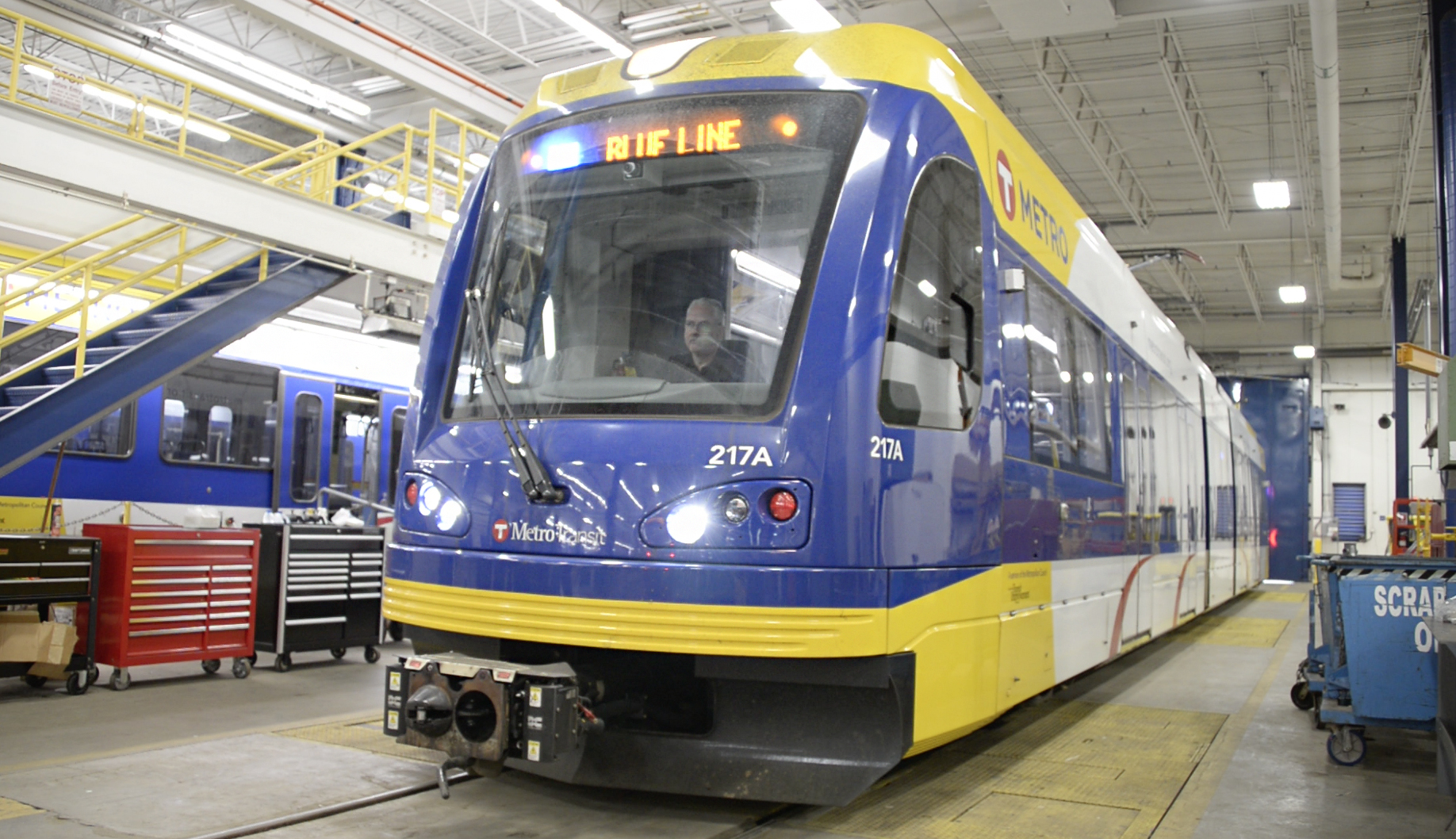 Sitting on shop carts in a basement workshop at the Hiawatha Operations and Maintenance Facility are dozens of metal and plastic modules, each outfitted with a set of relays, sequencing devices and a tight bundle of red, blue, white and yellow wires.
Sitting on shop carts in a basement workshop at the Hiawatha Operations and Maintenance Facility are dozens of metal and plastic modules, each outfitted with a set of relays, sequencing devices and a tight bundle of red, blue, white and yellow wires.
They represent a lot of work — and a lot more to come.
That’s because the forearm-sized modules are the custom-crafted, hand-made electronics behind the newest safety feature on Metro Transit’s light-rail vehicles: wig-wag headlights. Common on freight trains, wig-wag headlights alternately flash to help those outside the train detect motion and take notice of the approaching vehicle.
Although not a requirement on light-rail, they are being installed across the fleet as yet another way to alert pedestrians, cyclists and motorists of an oncoming train.
The wig-wag headlights will automatically go on anytime a light-rail operator activates a train’s warning bells and horns. The audible warnings are activated whenever a train pulls into or out of a station, or crosses a street or pedestrian crossing on the METRO Blue and Green lines.
“The operator is going to continue doing what they’ve always done, but this is going to give that higher degree of visibility to everybody outside the train,” said Brian Funk, who served as Director of Light Rail before recently moving to Bus Transportation.
With 86 light-rail vehicles, and headlights on each end, electronic technicians have been tasked with building hundreds of modules and harnesses — the wiring that ties them into the power supply.
The modules were designed and assembled by Electronic Repair Technicians Scott McDowell and Bruce Von Drashek — meticulous work that took several months. “These little fingers have been going for quite a while,” Von Drashek said.
Building the hardware is just step one. Because the wig-wag lights are a modification from the original design, Electro Mechanic-Technicians Doug Robinson and Brooks Letourneau were tasked with coming up with a way to fit them into both the newer Siemens and older Bombardier trains.
“Our role was to modify the assembly to accept the new lights, concentrating on universality and making sure we used as few parts as we needed,” Robinson said. “Making it as efficient as possible was a lot of fun.”
Wig-wag headlights have been installed on two trains and the entire fleet will eventually be outfitted.
In addition to providing greater visibility, the project will improve reliability. LED lights last up to seven years, compared to about a year for the existing headlights. Using LEDs also eliminates the need for a DC to DC converter, which can fail and cause trains to be pulled from service.